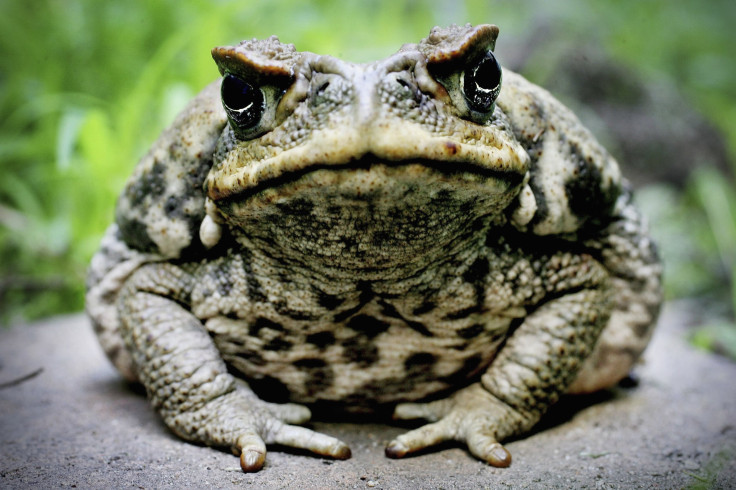These Weird Toads Swallow Their Tongue Every Time They Eat [Watch]
KEY POINTS
- Researchers made the strange discovery in cane toads
- The tongue went back in the throat, almost reaching the heart
- A flexible cartilage plate helps dislodge food attached to the tongue
A new study has found that cane toads swallow their tongue every time they eat- a feat impossible in humans. The strange phenomenon was captured in a video with the help of an X-ray camera.
The team of researchers was surprised to find the tongue going back into the mouth of a cane toad as much as it protrudes forward to catch prey. The findings were published in the journal Organismal Biology.
"We know a lot about how frogs extend their tongues and how it sticks to their prey, but prior to this study, essentially everything that happens after they close their mouths was a mystery," lead author from University of Florida herpetologist, Rachel Keeffe, said, reported ScienceAlert.
The research team used a high-speed x-ray method called XROMM (X-ray Reconstruction of Moving Morphology). The result left scientists stumped.
"We weren't sure what was happening at first," Keeffe said. "The whole floor of the mouth was pulled backward into the throat and the tongue along with it." The whole process lasted less than two seconds.
For a detailed analysis, the researchers spent months feeding and then observing the cane toads (Rhinella marina). The meal mostly consisted of crickets.
The main protagonist of the story came out to be the hyoid. The hyoid is a flexible cartilage plate placed at the back of the throat that is held in place by muscles.
"The hyoid shoots up and presses the tongue against the roof of the mouth, after which it moves forward, essentially scraping the food off into the esophagus," Keeffe explained.
This could explain the presence of teeth-like ridges on the roof of the toad's mouth, the researchers suspect. The ridges may help with dislodging the food.
To track the movement of the tongue, researchers attached tiny metallic beads to the muscle. In the video, the orange marker that signals the tip of the tongue extends to catch an insect and then, just as quickly, goes back into the mouth.
"The mean distance that the tongue stretches during retraction equals or exceeds the mean distance that it stretches during protrusion," the researchers wrote in their paper, adding that the tongue went back 1.8 inches into the throat, almost reaching the heart.
In comparison, the average protrusion of the tongue by the cane toad to snap an insect is 1.6 inches.
Next, the researchers wish to study other species of frogs to find whether a similar mechanism of eating is common in the group.
Another toad, made famous due to its psychedelic toxin, was in the news recently. A picture of the Sonoran Desert toad or commonly called the DMT toad was shared by the National Park Service (NPS) on Twitter requesting people not to lick it.
"As we say with most things you come across in a national park, whether it be a banana slug, an unfamiliar mushroom, or a large toad with glowing eyes in the dead of night, please refrain from licking. Thank you," the NPS post read.

© Copyright IBTimes 2024. All rights reserved.





















